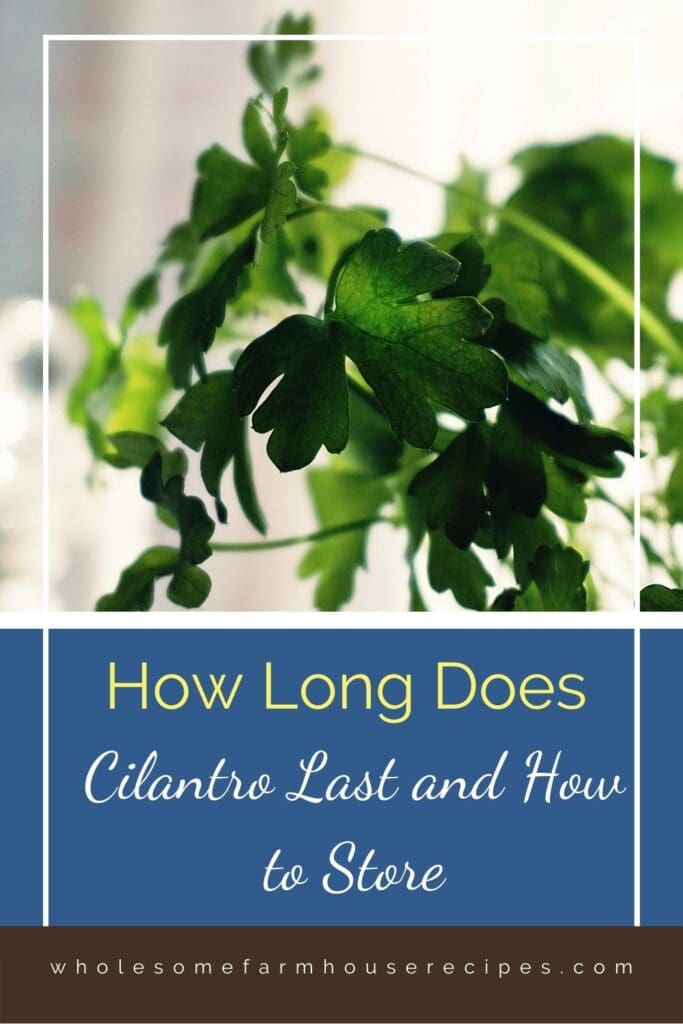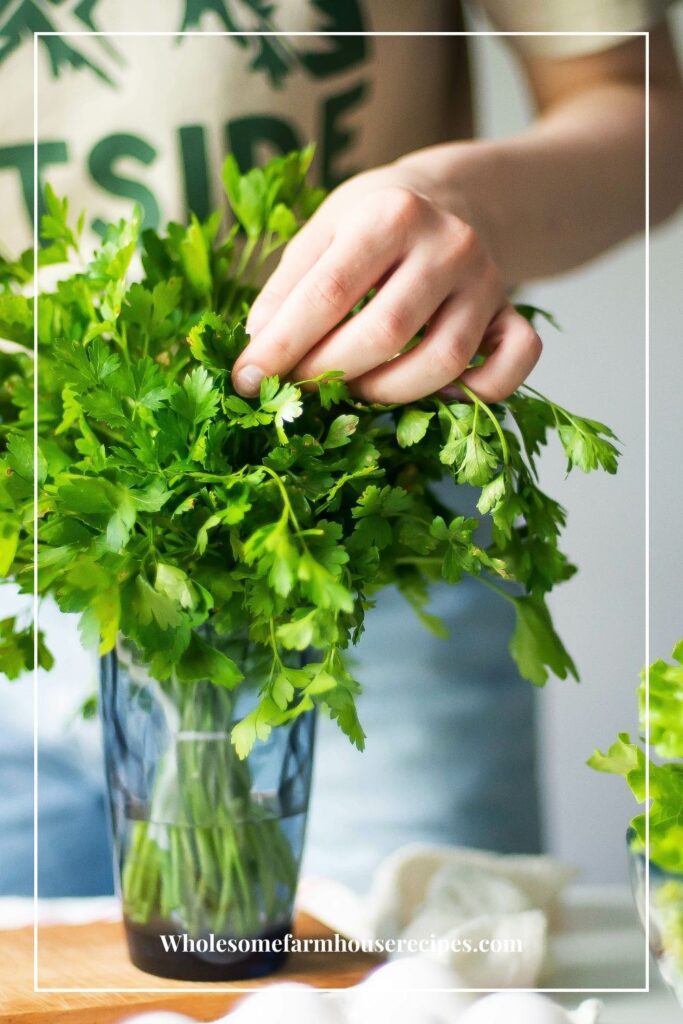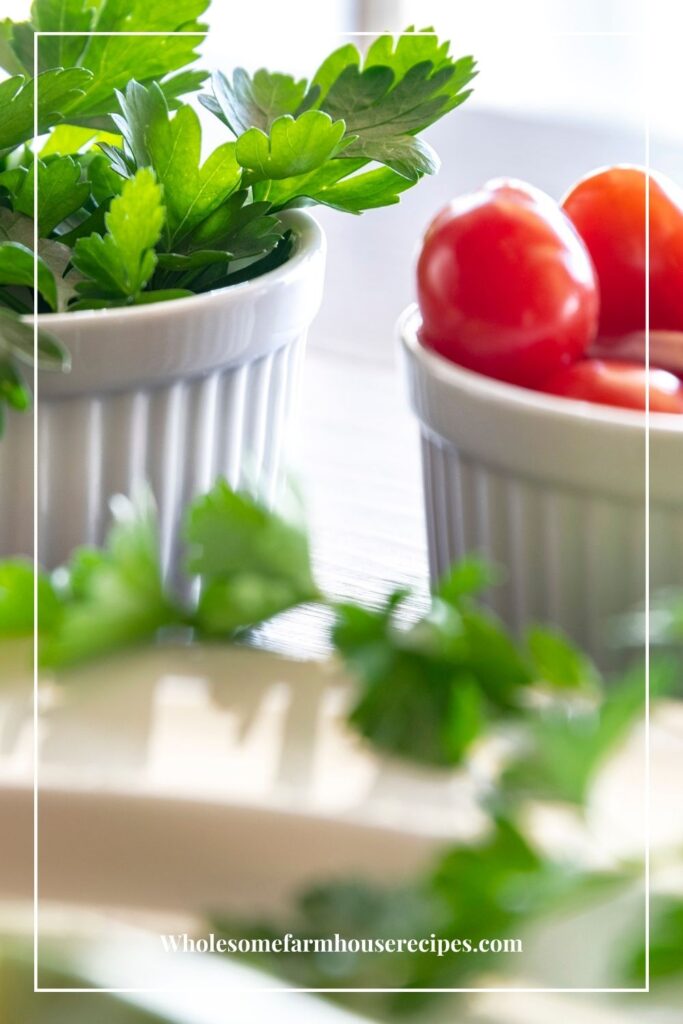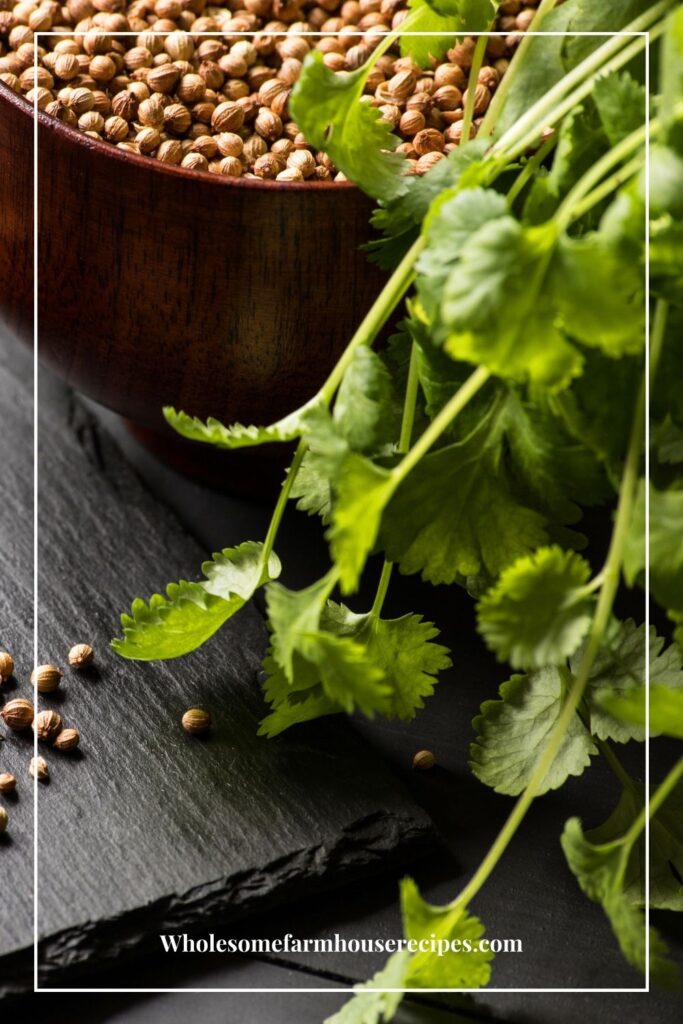Have you ever wondered how long does cilantro last and how to store it? Have you ever purchased a bunch of cilantro just to have it go bad before you can use it all up?
That used to be me. I would bring some fresh cilantro home from the grocery store or farmers market and never seem to use it up fast enough and end up wasting some. If left unrefrigerated at room temperature, it will take just a few days for the herb to wilt and the leaves to begin turning yellow.
If you’re like me, you probably use cilantro in a lot of your dishes. It’s a great way to add flavor and freshness. But how long does cilantro last, and how should you store it? Keep reading for answers to those questions and more.

What causes cilantro to go bad?
Too much water on the leaves causes slimy and dark leaves with an unpleasant smell. Dry air causes the leaves to shrivel, turn yellow, and go limp.
How to tell if cilantro is bad?
If you notice any leaves that are slimy, have turned brown or yellow. These are indicators that the fresh herb has gone bad. However, you may still be able to use the leaves that are still fresh looking yet.
How long does cilantro last in the refrigerator?
In general, when you bring cilantro home from the grocery store or even a farmers’ market, it will last just 3 to 5 days when storing in the refrigerator.
Learn the Simple Secrets for Storing Cilantro for a Long Period of Time
Without proper storage, it will only keep fresh up to 3-5 days before wilting. With proper storage, you can extend the shelf life of your cilantro for weeks. Use the freezer and extend it for months. Pro Tip. Did you know if you store cilantro in a glass jar of water it will keep fresh for up to 3 weeks? Just an inch of water will do. This works for other fresh herbs too.

Best Way to Store Cilantro
The key to finding the happy place for helping this delicate herb last the longest is to control all four of these: moisture, light, oxygen, and temperature.
Before properly storing your fresh herb, make sure to remove the spoiled leaves before storing. By removing the bad leaves, you are reducing the chance of the spoilage spreading to the entire bunch.
There are two different methods that work very well for preserving your fresh herb.
Method 1. Store the fresh cilantro in a glass of water.
Fill a large mason jar or other glass container with approximately 1 to 2 inches of cool water. Place the bunch in the glass with the stems down, in the cold water like a bouquet of flowers.
Next loosely cover the leaves with an upside-down plastic bag. You can seal the bag around the herb using a rubber band if you wish.
Store this jar of cilantro in the fridge. Making sure to check the water every now and then. Change the water if you notice it is looking cloudy.
Pro tip. You can also use this same method for other leafy herbs such as parsley and mint.
This will keep your herb fresh for up to 3 weeks.
Method 2. Plastic bag and paper towels.
Separate the cilantro and lay it in a single layer on 1 to 2 layers of paper towels. You can also use a flour sack towel for this.
Roll up the towel up like a jelly roll, loosely so you don’t damage the leaves.
Place this in an airtight container or a plastic bag that can be sealed.
Store in the refrigerator up to two weeks.
If you notice the towel or paper towels becoming too wet, take the time to replace them as this excess moisture will cause the cilantro leaves to spoil faster.
Do You Wash Cilantro?
It is not recommended to wash cilantro before storing in the refrigerator. Just wash and dry it in a salad spinner just before using.
However, you should wash cilantro and dry it before freezing. It is important to get rid of any dirt prior to freezing as the cilantro breaks down during the freezing process. It would be difficult to wash after it has thawed.
Pro Tip. Therefore, a good rule of thumb is to wash cilantro and other fresh herbs before freezing, but not before refrigerating.
Can fresh herbs make you sick?
Fresh herbs themselves are safe to eat. However, because they grow close to the ground, they can pick up harmful bacteria that can make you sick. Therefore, for food safety, it is best to wash it just before using.
Can You Freeze Cilantro?
Yes, you can freeze both the leaves and stems. It is a great way to preserve fresh cilantro for a long time. Some say 4 months, others say 6 moths. I have used it after 6 months and it was just fine.
2 Methods to Freeze Cilantro and other fresh herbs
- You can freeze it as a whole bunch in an airtight freezer bag.
- Another option is to chop the leaves and stems with a sharp knife or puree them with a food processor in olive oil or water. Add this to an ice cube try and freeze. You can either leave it in the ice cube trays or remove them after they are frozen and place them in a plastic freezer bag. Then you can use cilantro cubes one or more at a time and use it in your favorite recipe.
This herb is so incredibly popular because there are many different ways to use it. Personally, I always have cilantro on my grocery list. It can take any meal from good to amazing if you love this herb.

How to Use Fresh Cilantro
Using cilantro is a simple way to flavor salsa, salads, marinades, dips, rice, and as a delicious garnish. Did you know that cilantro is used in American, Mexican, and Asian Cuisine? It is quite a popular herb that adds a fresh citrus taste with a hint of peppery flavor.
If adding it to a dish you are cooking, add it in at the end.
Sweet and Tangy Cilantro Lime Coleslaw
Pulled Pork Enchilada Casserole
How to use frozen cilantro?
Frozen cilantro is perfect for warm cooked meals. We add it so soups, stews, sauces, curry dishes, or any other cooked food you want to add extra flavor.

Is Coriander the same as Cilantro?
While both coriander and cilantro come from the Coriandrum Sativum plant, they are different parts of the plant. The coriander is the dried sees. Whereas the cilantro is the name for the leaves and stem of the plant.
Some People Love Cilantro and Some Definitely Do Not
It seems cilantro is one of those fresh herbs that people either love or hate, as it has a unique flavor. People that loathe the herb often explain the taste as soapy or pungent. On the other hand, people that love this fresh herb often explain the taste as having a citrus and slightly peppery note.
How do you keep cilantro alive outside?
The cilantro plant loves the full sun and soil that is rich and well-drained with a soil pH of 6.2 to 6.8. If you live in a warmer climate, the plant will do best with an afternoon shade. If your soil is not rich enough, you could add aged compost or other organic matter to help give the soil a boost for the plant to grow hearty and healthy.
Best Way to Store Cilantro
Kitchen Essentials
Materials
- Fresh Cilantro
- Any Fresh Herb such as parsley, mint, oregano, and basil
Instructions
- Method 1. Store the fresh cilantro in a glass of water.
- Fill a large mason jar or other glass container with approximately 1 to 2 inches of cool water. Place the bunch in the glass with the stems down, in the cold water like a bouquet of flowers.
- Next loosely cover the leaves with an upside-down plastic bag. You can seal the bag around the herb using a rubber band if you wish.
- Store this jar of cilantro in the fridge. Making sure to check the water every now and then. Change the water if you notice it is looking cloudy.
- Method 2. Plastic bag and paper towels.
- Separate the cilantro and lay it in a single layer on 1 to 2 layers of paper towels. You can also use a flour sack towel for this.
- Roll up the towel up like a jelly roll, loosely so you don’t damage the leaves.
- Place this in an airtight container or a plastic bag that can be sealed.







